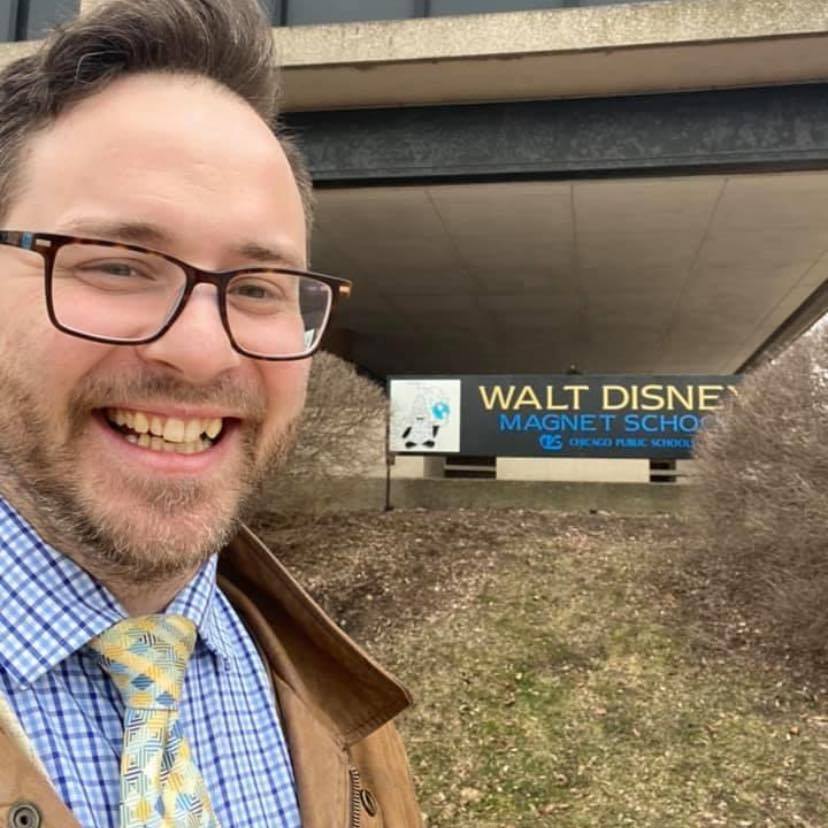I am proud of my service on the Local School Council on Disney Magnet Elementary and work to fulfill my community’s ability in Buena Park, Uptown to partner for the good of the school and that of our neighborhood.
My experience on this Local School Council, and that of my service on Senn High School’s Local School Council years before in the Edgewater neighborhood, have informed my stance on planning for a very needed return to structured learning for CPS.
This should not be an opportunity to retrofit what we had to a dynamically different world.
This is an opportunity to invent what we need to reach goals we have not formerly achieved.
It will be unfair to our current students to expect a return to an old normalcy during their education tenure.
The differences in opportunity posed by the weight of a zip code will become exacerbated.
Both at Senn High School, a neighborhood CPS high school, and Disney Elementary, a magnet CPS elementary school, it remained and remains clear:
Schools are impacted by their local neighborhoods, and yet some neighborhoods have been disproportionately impacted by the pandemic.
Those schools will be in the most need, and yet, history shows that because of this, they will likely receive the least support.
The inequality our students face in specific zip codes will fester.
And the magnet schools:
Our amazing students come from all over the city to meet in one building.
Our amazing teachers come from all over the city. That is true of any school.
CPS is a system riddled with inequality and holes in its network large enough for a virus to exploit.
And this pandemic burdens us with its own inequality: the generation before this benefited from what schools did have to offer, the generation after this will benefit from what schools will have to offer– let’s not place an unnecessary challenge on our current students to now need to navigate a hybrid model– regardless of any age, returning to school this fall will not be as expected. There is little reason to try to pretend otherwise:
What is meant to be a fix, may actually become a wound.
Attempting to address a holistically complex matter with piecemeal simplicity will not achieve its mission, and may be antithetical.
With simple division, what about how some schools’ halves are less a ratio than that of other schools’ halves?
Or In effect, by teaching the lower grades dynamically different than the upper grades, are we are simply doubling the number of schools we have, doubling the limits to access, doubling the impacts of the less and less funding sources?
This can be an opportunity to survive this pandemic with a better roadmap for our students than they had coming into it.
Students should not be devoting their time commuting to school for in class learning through an antiquated model refurbished to fit a new crisis, and teachers should not be exposed to it. The world is going to be ever more digital, as those of us committed to education for the benefit of our future can see this as an opportunity to prepare our students for that future.
Let’s use the Fall of 2020 to perfect our pedagogy of virtual education.
The real mission of Fall of 2020 needs to be looking forward to the Falls of 2025, 2030, and all the years to come.
Our mission must be to assign the degrees of urgency to the issues we must resolve.
- Current Students Must Continue Learning
- This Continued Learning Must Not Further Endanger the CPS Community or that of Chicago
- This Continued Learning Must Actively Work Against Inequality, or Risk Worsening It
Students do not have to be in class for learning. The most urgent matter is to continue our students’ learning. We must perfect our virtual learning, not delay it.
If we do not perfect our e-learning but instead delay it, we will defer, deny, and miss the opportunities that could have been possible for our current students. Their academics will suffer more by not taking the time to find the best approach. They will be less capable of performing to their fullest. The is not another option.
Bringing our students back and returning our teachers and staff to our buildings, many nearly a century old, will only increase the risk of health endangerment, either directly caused by the pandemic or in another way weakening the immunity of those present. It will be an endangerment; there is no other way around that.
Further, opening our buildings equally does not ensure equal opportunity in all of them. If this was not true before, it will be less true now. It is a reality:
Not every high school has a CPD resource officer on its campus.
Not every elementary school has a librarian.
The problems are too complex to push under the rug.
The forced pause of our trajectory can allow us the time to realign to a more just education system for all of Chicago.
We must focus our attention on the future of learning, and take the steps toward that.
Focusing our attention on opening our buildings should not be our immediate priority.
Schools provide resources too, for example, food. But food can be delivered through social nonprofit group networks or pick up zones.
We need to rethink what we have before taken for granted.
We need to not imagine how to make the new classroom fit our past models.
We need to imagine how to make the best classroom models that fit for our students’ new future.
